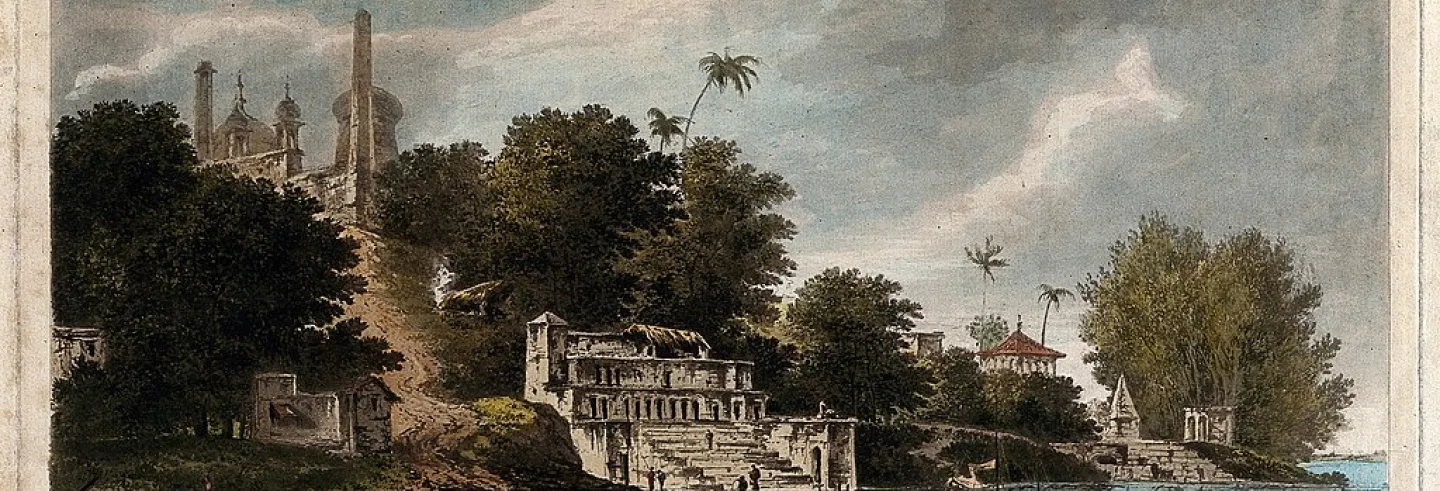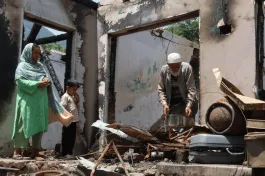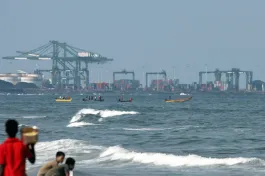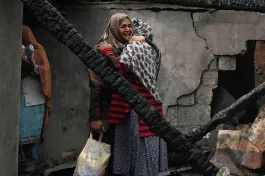The Supreme Court on 12 December 2019 dismissed the 18 review petitions which had been filed in response to its Ayodhya verdict. Although the Ayodhya title dispute lasted for over a century, the apex court acted in the swiftest possible manner while disposing of the review pleas. It did not “find any ground whatsoever” to entertain the review petitions after having “carefully gone through” the attached papers that had been submitted. Despite the Court’s benevolent view of its judgement, the truth is that the verdict pronounced by the five-judge bench on November 9 was full of contradictions. To put it plainly: the Supreme Court chose to bow down before the forces of majoritarian thuggery and extremism. Logic and law were conveniently set aside by the top court to appease a certain radical section of the society.
Attempt to pacify the Muslim litigants
To do complete justice in the Ayodhya dispute, the Supreme Court invoked Article 142 of the Indian Constitution. Technically speaking, Article 142 can be employed in cases of second appeal. The Ayodhya title dispute wasn’t heard at the level of a district court. It came directly for hearing before the Allahabad High Court. Therefore, the pleas which were pending before the Supreme Court happened to be the first appeal. The Court was realistically acting as the court of first appeal while adjudicating upon the Ayodhya dispute. Given the sensitivity of the Ayodhya matter, the litigants should not have been unfairly deprived of the right to a second appeal. Notwithstanding this inherent flaw in the progression of the case, the Court did not consider the need to seriously hear the review pleas for justice’s sake. It was in a hurry to bring closure. It failed to realise the ramifications of its decision on India’s secular polity.
More importantly, the Ayodhya verdict exemplified how Article 142 has become an arbitrary tool in the hands of the Supreme Court. The apex court has repeatedly fallen back on Article 142 to pass orders that are beyond the scope of its jurisdiction. Weeks before taking over as the Attorney General of India in June 2017, KK Venugopal stressed the need for judicial restraint as he reflected on the plus and minus points of Article 142. After all, Article 142 is not meant to be whimsically utilised by the Court. Unfortunately, that’s precisely what seems to have occurred in the Ayodhya case as the Court refrained from solely deciding on the title rights of the disputed property under scrutiny. The powers which the apex court derives out of Article 142 are not absolute. By invoking Article 142, the Court cannot pass a judgement that violates a statutory provision. As the Supreme Court pronounced the Ayodhya verdict, it conceded that the Babri Masjid was built in the 16th century by Mir Baqi on the orders of Mughal Emperor Zahiruddin Muhammad Babur.
Since the Babri Masjid had been originally established as a place of public worship for the Muslims, it enjoyed the status of a waqf property.
The Supreme Court also agreed that mere cessation of prayers cannot lead to the inference that the mosque had been abandoned. Nonetheless, at the time of moulding relief, the Court relied on Article 142 and delivered a decree that was in contravention of the Waqf Act. Much like the Allahabad High Court, the Supreme Court tried to extend a ceremonial olive branch towards the Muslim community. For all practical purposes, the suit of the Sunni Waqf Board was summarily dismissed. They were not given possession of the disputed site. But the judgment, which was authored by an unnamed judge, doesn’t say so. On the contrary, the suit of the Sunni Waqf Board was decreed. To make matters more complicated, the Court conceded that the Muslim parties had been aggrieved due to the desecration and destruction of the Babri Masjid.
The apex court directed that the Sunni Waqf Board should be provided with a five-acre plot at an alternate site as restitution. In doing so, the Court greatly undermined the nature of waqf lands in the country as also the Waqf Act that governs them. A waqf property is a religious endowment. It is dedicated to God. This form of a dedication is an irrevocable one. The ownership of a waqf property rests with God and not with the maintainer or administrator of the relevant property. On the question of law, it was/is a settled legal principle that waqf properties cannot be bartered, gifted, sold or transferred. Since the Babri Masjid had been originally established as a place of public worship for the Muslims, it enjoyed the status of a waqf property. Consequently, the Court could not have allocated an alternate plot in lieu of the demolished mosque.
In September 2010, a three-judge bench of the Allahabad High Court had ruled that the 2.77 acres of disputed property in Ayodhya should be divided between Ram Lalla, Nirmohi Akhara, and Sunni Waqf Board. The tripartite division was hailed by many commentators and analysts. It was supposedly a reflection of the court’s conciliatory approach. But it was far from being a just division. Two-thirds of the disputed property went to the Hindu parties. If the intent of the court was reconciliation through partitioning of the property in question, it ought to have divided it equally between the two communities. Secondly, the Allahabad High Court had allocated the area underneath the central dome of the Babri Masjid to Ram Lalla, a juridical entity that represented Lord Ram, a Hindu deity, in infant form. Accordingly, it became evident that the partitioning of the disputed site had been done with the aim of gratifying the Hindu litigants at the cost of the Muslims. The Supreme Court, too, followed the same trajectory. The learned judges of the Court sought to pacify the Muslims by allocating five acres of land to the Sunni Waqf Board.
Had it been about physical space or monetary compensation, the Muslim parties would have agreed to the relocation of the Babri Masjid in the 1980s itself.
By doing that, the apex court overlooked the larger battle which was being waged. The resistance that was put up by the Muslim parties was essential for preserving the constitutional principles of religious freedom and equality. There are about 5 lakh registered waqf properties in India. Some of the country’s most majestic mosques can be found in the congested bylanes of Old Delhi. It was never about the land for Muslims. Had it been about physical space or monetary compensation, the Muslim parties would have agreed to the relocation of the Babri Masjid in the 1980s itself. But they didn’t. Giving up on the Babri Masjid without putting up a legal fight would have been the same as voluntarily surrendering the fundamental rights of Muslims. The Court, therefore, erred in thinking that it would be able to assuage Muslim sentiments through a token gesture. Five acres of land means little when it comes at the cost of a community’s constitutionally protected liberties. Though the Court’s intention might have been to compensate the Sunni Waqf Board adequately, it failed to see the bigger picture. In the process, the rights and interests of Indian Muslims were sacrificed in the Court to satisfy the aspirations of the majority community.
Benign attitude towards Hindu claims
Without much ado, the Supreme Court agreed with the contention that Lord Ram was born underneath the central dome of the Babri Masjid. What brought the Court to this conclusion was basically the faith and belief of Hindus. Interestingly, the apex court did not bother to thoroughly test the said claim against the doctrine of essentiality. Through this doctrine, the Court has on various occasions opined whether a belief or religious practice is an essential part of a particular faith or not. If the claims of the Hindu parties had been exhaustively scrutinised as dictated by the doctrine of essentiality, they would have surely fallen flat. The supposed belief that Lord Ram was born exactly underneath the central dome of the Babri Masjid was largely non-existent in the 19th century. Turning down the reliefs sought in a litigation filed by a Hindu priest in Ayodhya, District Judge Colonel FEA Chamier wrote in 1886 that Ram Chabutra “is said to indicate the birthplace” of Lord Ram. The Ram Chabutra, as we know, was situated in the outer courtyard of the disputed property which was at some distance from the three domes of the Babri Masjid. It was a raised platform that was constructed in the 1850s by local Hindus through an act of trespass. The belief in the divinity of the Ram Chabutra, too, was more or less restricted to in and around Ayodhya.
Although the late 19th and early 20th century produced many Hindu stalwarts, namely, Dayanand Saraswati, Vivekananda, Aurobindo, Madan Mohan Malaviya, etc., none of them ever bothered to forcefully rake up or champion the cause of Ram Janmabhoomi. It was only in the 1980s that the Vishva Hindu Parishad (VHP) managed to convert this local Hindu belief into a pan India one through a nationwide religious and political movement. At that time as well, the leaders of the Bharatiya Janata Party (BJP), who spearheaded the movement, could not give a definite answer in relation to the exact place of Lord Ram’s birth. Hinduism or Sanatan Dharma is said to be among the oldest religions in the world. How can a supposed belief that is akin to an article of faith for Hindus gain popularity only in the 1980s?
What is bewildering is that the Court found nothing wrong in citing European writings to establish a Hindu belief of paramount importance.
There is no disputing that Hindus have for long considered Ayodhya to be the birthplace of Lord Ram. But it would be a gross exaggeration to suggest that the vast majority of Hindus have believed for a fair amount of time that Lord Ram was born precisely underneath the central dome of the Babri Masjid. Such a belief is a modern one and does not constitute an essential part of the Hindu faith. Hence, the Court was unreasonable in accepting the given proposition of the Hindu parties. As a religious tradition, Hindu scholars have always stated with pride that their religion is not based on a single book. They maintain that Hindus have an entire library of religious texts. Indeed, it is ironic that the Supreme Court could not cite one verse from an indigenous Hindu scripture to effectively establish the exact birthplace of Lord Ram. No Hindu religious text in Sanskrit or any other indigenous language makes such a claim. Curiously, the hugely personal memoir of Babur is also silent on this issue. In the Baburnama, Babur relates that he ordered his troops to raze the tomb of a dervish named Shahbaz Qalandar. On Babur’s instructions, some idols which depicted naked figurines were also smashed in the valley of Urwahi near Gwalior. Yet there is nothing in the Baburnama that strengthens the narrative of temple desecration in Ayodhya. Contrarily, Babur’s autobiography describes the temples which he toured in Gwalior and narrates the tale of his visit to Gurh Kattri, a Hindu shrine. He also goes on to accuse Rana Sanga of having undertaken “the destruction of mosques and places of worship” to his disdain. Not surprisingly, therefore, the Supreme Court chose to disregard much of the memoir since it does not offer a complete account of Babur’s life owing to certain missing portions of the manuscript. To prove the significance of the site for the Hindus, the Court had to mostly depend upon the accounts of foreign travellers. What is bewildering is that the Court found nothing wrong in citing European writings to establish a Hindu belief of paramount importance.
[T]he entire Ram Janmabhoomi movement was premised on the notion that the Babri Masjid was built after destroying a Ram Temple. In its judgement, the apex court noted that the Archaeological Survey of India ... did not record such a finding.
The Supreme Court, in the first place, should not have waded into this debate at all. It was a wholly unwarranted and meaningless exercise. Lord Ram is a mythological conception. He is a religious figure. Millions and millions of people worship him. Still, that doesn’t make Lord Ram a historical character. At best, it can be assumed that Lord Ram lived during the era of prerecorded history. Just because it is believed that Lord Ram was born at a certain location, it doesn’t mean that his worshippers will automatically garner the title rights over that particular place in the 21st century. Hence, it was irrational on the part of the Supreme Court to have delved into this subject. Most importantly, the entire Ram Janmabhoomi movement was premised on the notion that the Babri Masjid was built after destroying a Ram Temple. In its judgement, the apex court noted that the Archaeological Survey of India (ASI) did not record such a finding. The non-Islamic structure of Hindu religious origin which the ASI spoke of belonged to the 12th century whereas the Babri Masjid was constructed in the 16th century. What happened to that 12th century temple or what led to its destruction? Nobody knows. With this, the bedrock of the Ram Janmabhoomi movement collapsed. But it didn’t matter much to the court. After accepting the unlawfulness of the demolition of the Babri Masjid, the Supreme Court went ahead and gave Ram Lalla the complete possession of the disputed site. If Ram Lalla is a juristic person, as concurred by the Court, Ram Lalla can sue but it can also get sued. In the Ayodhya matter, the idol of Ram Lalla was illegally and surreptitiously smuggled inside the Babri Masjid. The Supreme Court acknowledged the same. How could it then handover the disputed site to Ram Lalla? Another problematic aspect of the Court judgement concerns the law of limitation. Nirmohi Akhara, one of the oldest litigants in the case, was barred by limitation. How be it then that Ram Lalla, who first became a litigant in the case in 1989, was unaffected. Such are the inconsistencies in the Court judgement that even a professor of law would be unable to make sense of it in her classroom.
Undue reliance on the unreliable ASI report
It is worth pointing out that the ASI report, which was partially relied upon by the Supreme Court while deducing that Babri Masjid wasn’t built on vacant land, was prepared in a brazenly partisan fashion. According to the directives of the Allahabad High Court, the ASI was supposed to refer to the Officer on Special Duty at the excavation site in Ayodhya as OSD – Ram Janmabhoomi and Babri Masjid. But the ASI always referred to the same as OSD – Ram Janmabhoomi. The Allahabad High Court had stipulated that the excavation should be carried out under the watch of five eminent archaeologists out of which two were necessarily required to be from the Muslim community. However, no such representation was given to them. As a matter of fact, the fourteen-member ASI team which supervised the excavation had only one Muslim archaeologist. Initially, not a single Muslim labourer was involved in digging up the trenches and carrying out the excavation. When an objection was raised, the ASI brought in a few Muslim labourers. Still, only nine of the 89 labourers employed by the ASI for the said purpose were Muslims. It is apparent from these details that the team which was constituted by the ASI to excavate the site in question was wholly under-represented from the Muslim perspective.
Besides the problematic composition of ASI’s team, what was far more alarming was the biased manner in which the ASI undertook excavation at the given site. The entire exercise seems to have been done with the objective of arriving at a premeditated theory involving pillar bases. And this did happen. Relying on the discovery of what it termed as pillar bases, the ASI postulated the existence of a Hindu temple at the disputed site which pre-dated the Babri Masjid. These observations of the ASI were contested by the observers of the Sunni Waqf Board, namely, Prof. Supriya Varma and Prof. Jaya Menon. The two of them are reputed archaeologists who are currently associated with Jawaharlal Nehru University and Shiv Nadar University, respectively. It was their assessment that what the ASI described as pillar bases were actually broken pieces of bricks with mud inside them. In any case, those alleged pillar bases could not have supported a “massive structure” because they were all of different shapes and sizes apart from being located at different levels and belonging to distinct periods. In her brilliant exposition before the Court, Meenakshi Arora correctly called out these glaring irregularities in the ASI’s report. The senior counsel did not fail to mention that the ASI’s report had unfairly described the Babri Masjid as a “disputed structure” whereas the Ram Chabutra was labelled as a “shrine”.
Like the Court’s judgement in the Ayodhya dispute, the name of the person who authored the conclusion of the ASI report wasn’t disclosed.
In its eagerness to demonstrate the pre-existence of a Hindu temple at the disputed site, the ASI also refrained from mentioning the animal bones which were found during the excavation. Obviously, it did so because they could not have rationally explained the presence of animal bones at the place of a Vaishnavite temple. Thus, the ASI got its labourers to throw away those bones. There were a host of other issues in the ASI report which included the inappropriate periodisation of the excavated material as well as its erroneous documentation. For instance, the ASI claimed in its progress report dated 22 May-5 June 2003 that it had carved out a certain pillar base from Trench Number 3. In total, 90 such trenches had been dug up by the ASI. However, the process of digging into Trench Number 3 started only in July 2003. In spite of that, the learned archaeologists of the ASI managed to put on record an account of the recoveries which they made from Trench Number 3 a month before actual digging was initiated therein.
One of the lesser-known aspects of the ASI report is the discovery of a western wall at the excavation site. A western wall is a prominent feature of a mosque. Indian Muslims face towards the west while praying as the Kabah in the Arabian Peninsula is situated towards the west of India. Both Prof. Varma and Prof. Menon relied on this to infer that “underneath the Babri Masjid, there are actually older mosques” but the ASI did not pay much attention to their viewpoint. This very argument was vehemently advanced by Arora during her submissions before the apex court. Sadly, the Court too followed in the footsteps of the ASI by overlooking the relevant inference.
Notwithstanding the Supreme Court’s judgement, it goes without saying that the ASI did a dishonest job. That is why no archaeologist from the ASI dared to take ownership of the conclusions which were drawn in the excavation report. Every chapter in the report had an author except for the concluding one. Like the Court’s judgement in the Ayodhya dispute, the name of the person who authored the conclusion of the ASI report wasn’t disclosed. It was reportedly in the last paragraph of the conclusion that the ASI recorded that there was a “temple underneath the Babri Masjid”, an assertion which it did not make anywhere else in the concerned report. Irrespective of the weaknesses in the ASI report, there is no denying that its intention to build a case for the Hindu parties was successfully realised. The incumbent Union Government has decided to repay this debt of the ASI by vowing to bring out its report in the form of a book.
Justice denied
Throughout its Ayodhya judgement, the Supreme Court buttressed the importance of secularism. It said that a title dispute cannot be decided on the basis of faith. Albeit the Court tried very hard to sound legally objective and non-partisan, it eventually sided with the sentiments of the majority community. If the case was simply a title dispute, there was no need for the then Chief Justice Ranjan Gogoi to constitute a five-judge bench to hear the matter. On top of that, the initial Ayodhya bench, which was constituted by Justice Gogoi, did not have a single judge from the minority community. Following the recusal of Justices NV Ramana and UU Lalit, Justice Gogoi brought in Justices Ashok Bhushan and S Abdul Nazeer. But no female judge was taken onboard. Justice Indu Malhotra, who had dissented in the Sabarimala case, was also overlooked. From all of this, it appears that Justice Gogoi forgot that “not only must justice be done, it must also be seen to be done” by one and all.
The secular credentials of the Supreme Court would have been better served if Justices Rohinton Fali Nariman and KM Joseph were made a part of the bench that presided over the Ayodhya dispute. The two judges had the natural advantage of being viewed as equidistant, neutral, and unaffected by the claims of both the Hindu and Muslim parties owing to their personal background. Nonetheless, the Court opted for a bench that was not as plural or representative as it could have been. This does not mean that the judges who finally heard the case were not in a position to do justice due to some inherent impartiality in their character. In fact, they are all known to be quite learned. However, the unanimous verdict which they delivered will forever remain a blot on the Indian judiciary. Instead of solely deciding on the title dispute, the apex court went into issues that it wasn’t supposed to deal with.
Not only did the Supreme Court give the possession of the disputed site to Ram Lalla but it also laid down the blueprint for the construction and management of a Hindu temple through a trust. The Court’s judgement, meanwhile, went against the central government’s stated commitment of rebuilding the Babri Masjid which came against the backdrop of its demolition. The apex court mentioned in passing that the Sunni Waqf was free to construct a mosque on the alternate site that it will be allotted simultaneously. The keenness that the Court exhibited in laying the groundwork for the construction of a Ram temple was completely missing when it came to the reconstruction of the Babri Masjid. The three litigations which were adjudicated upon in the 19th century were also not given due importance by the five-judge Court bench.
[T]he Court in its wisdom put an unequal burden of proof on the Muslim side whereby it asked them to demonstrate exclusive possession of the site from 1528-1857.
To sum up, the final result of those petitions was that the local Hindus were not permitted to build a canopy over the Ram Chabutra. Their proprietorship and possession of the Ram Chabutra in the outer courtyard could also not be established. Yet the Muslims did not prevent them from accessing the outer courtyard of the Babri Masjid. Local Hindus had acquired the same in the 1850s by encroaching upon the property in question. Back then, the Muslims repeatedly objected to their presence on the aforesaid premises. Nevertheless, the district administration chose to maintain status quo. They erected a fence outside the Babri Masjid to keep the two communities at bay. Thereby, the property was divided into two parts: the Ram Chabutra fell in the outer courtyard and the inner courtyard housed the Babri Masjid. The Muslims came to terms with the existing scheme of arrangement subsequent to the judiciary’s dismissal of the pleas filed by the Hindus in the 1880s. This uninterrupted access which the Hindus enjoyed to the outer courtyard of the Babri Masjid eventually went against the Muslims.
Before the Supreme Court, both the Muslim and Hindu side tried to prove their possession of the inner and outer courtyard, respectively, post-1857. But the Court in its wisdom put an unequal burden of proof on the Muslim side whereby it asked them to demonstrate exclusive possession of the site from 1528-1857. The fact that the Muslims controlled the inner courtyard post-1857 was sufficient to infer that they were always in continuous possession of the main structure but the apex court felt otherwise. It reasoned that “there was evidence on a preponderance of probabilities to establish worship by Hindus” in the inner courtyard before the annexation of Oudh by the British in 1857. The Court further said that the possession of the inner courtyard post-1857 was contested and not exclusively with the Muslims. Thus, the Supreme Court adopted a lopsided approach while determining the possession of the inner and outer courtyard.
The access which the Hindus enjoyed to the outer courtyard from the mid-19th century onwards was deemed as possession by the Supreme Court. Its conclusion was at variance with the orders of British India’s courts wherein the Hindus failed to prove their ownership of the Ram Chabutra in the outer courtyard. In the 19th century litigations, the Hindu litigant did not lay a claim over the main structure in the inner courtyard. The inner courtyard wasn’t the bone of contention in those litigations. How be it then that attempts to desecrate and unlawfully usurp the main structure by local Hindus came to be viewed in the apex court as a challenge to Muslim possession of the inner courtyard from 1857-1949. Based on these irrational, unfathomable, and historically dubious propositions as well as by treating both the outer and inner courtyard as a single entity, the Supreme Court ruled entirely in favour of Ram Lalla. On the whole, the Court disregarded the existence of the Babri Masjid for over four centuries, that Muslims offered prayers over there up until 1949, and the mosque’s illegal destruction by rioters in 1992. For the Supreme Court, what was more significant was the continued assertion by the Hindus “to pray below the central dome” and their belief that “Lord Ram was born at the disputed site”.










